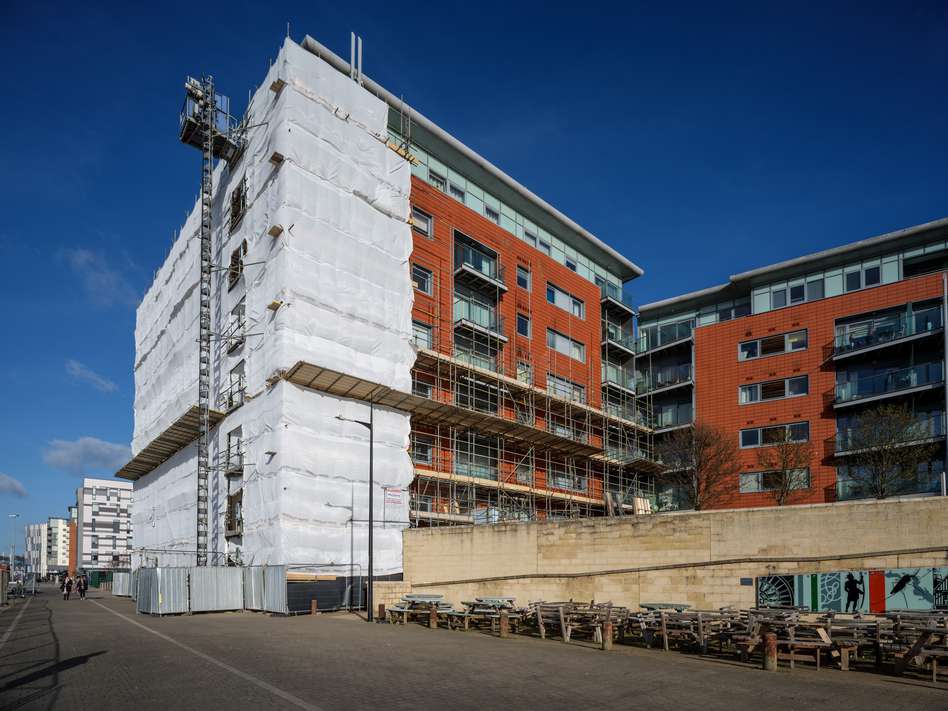Building Safety Act and Fire Safety Act 2022: implications for landlords

The Building Safety Act 2022 introduced a considerable amount of new legislation focused on the remediation of building safety defects in existing buildings.
The Regulations have been introduced following the Grenfell disaster and have been designed to shift responsibility for the payment of remediation costs from leaseholders to developers and landlords. In doing so the Regulations have imposed a significant administrative burden on landlords.
The Regulations create a new statutory provision to require landlords and associated persons to pay for remediation works for cladding or other safety defects in residential buildings of at least 5 storeys or 11 metres in height.
The government has also introduced the Building Safety (Leaseholder Protections) (England) Regulations 2022, setting out further details of the practical actions leaseholders and landlords will be obliged to take under the Building Safety Act 2022.
What does this mean for landlords?
When does a landlord need to provide a certificate?
What information needs to be included?
What if I do not provide a landlord certificate?
Fire Safety (England) Regulations 2022 – What are they?
Who is responsible for fire safety in multi-occupied residential buildings?
What are the new requirements?
What does this mean for landlords?
For landlords, a particularly burdensome characteristic is the obligation to provide Landlord's Certificates in the form set out in the schedule to the Building Safety (Leaseholder Protections) (England) Regulations 2022 and the associated documents.
Sections 117-125 and Schedule 8 of the Building Safety Act 2022 makes provision for how the remediation of defects in higher rise buildings will be paid for and particularly the balance of liability between leaseholders and landlords.
Schedule 8 sets out the restricted circumstances in which remediation costs can be passed on to the leaseholders and the extent to which landlords are expected to make contributions.
The Regulations prescribe the form and circumstances in which landlords must provide information to leaseholders to enable them to assess whether they will be required to contribute towards the costs of remedial works by payment of a service charge.
The purpose of the new landlord’s certificate is for the landlord to formally communicate with leaseholders as to if they benefit from those restrictions on the service charge. The landlord within the certificate provides information as to whether it is “responsible”, or whether it meets the contribution condition.
When does a landlord need to provide a certificate?
Landlord's certificates must be provided in the following circumstances:
(a) when the current landlord makes a demand to a leaseholder for the payment of a remediation service charge.
(b) within four weeks of receipt of notification from the leaseholder that the leasehold interest is to be sold;
(c) within four weeks of becoming aware (either themselves or by notification from another person) of a relevant defect not covered by a previous landlord’s certificate; or
(d) within four weeks of being requested to do so by the leaseholder.
What information needs to be included?
The certificates are set out in a prescribed form annexed to the Regulations and require a wealth of financial detail and details of works carried out. They must also be accompanied by:
(a) details of the corporate structure of any group of which the landlord is part: this includes the names of any group companies; the beneficial owner of each company; the names of each company's directors; the names of any persons with significant control and details with regard to any trusts that are part of the corporate structure.
(b) financial details for the corporate group: the landlord's company accounts as well as, where relevant, accounts for each company in the landlord group, with the net worth certified by a chartered accountant or the finance director of the landlord's company;
(c) evidence and details as regards work carried out: full details of any persons or joint ventures undertaking work and evidence of the relevant details of the work carried out as well as costs.
Similar evidence will need to be provided for superior landlords and/or any previous landlord who was the landlord on 14 February 2022. Such landlords are obliged to provide this when requested to do so by a current landlord.
Certificates will need to be provided before a landlord can make any demand for a service charge contribution from tenants; in such a case, the certificates are likely to be relevant to all tenants in a building. However, landlords will also have to provide a certificate whenever a tenancy is sold, or whenever a leaseholder requests one, which may mean time consuming updating of the certificate.
What if I do not provide a landlord certificate?
Suppose a landlord certificate is not provided in the form set out in the Regulations. In that case, it is presumed that the landlord was responsible for any relevant defects and no service charge is payable.
It is therefore crucial that landlords who wish to demand a service charge for building safety remedial works comply with the Regulations and provide a landlord's certificate and associated documents within the required timescales.
Fire Safety (England) Regulations 2022 – What are they?
Following the Grenfell Tower disaster in London in 2017, the government has implemented new fire safety responsibilities which introduces significant changes regarding fire safety. This is part of putting pressure on owners, landlords and building managers in England to address concerns around fire safety assessments and compliance checks. The latest regulations came into force from the 23rd January 2023.
The new legislation is aimed at improving the fire and structural safety risks in multi- occupied residential buildings. The regulations are legislated as the Fire Safety (England) Regulations 2022 and are an amendment to the Regulatory Reform (Fire Safety) Order 2005.
The new regulations implement additional fire safety duties that apply to multi-occupied residential buildings that have at least five storeys or are at least 11 metres in height. The building must contain two or more sets of domestic premises.
Building owners and managers should give careful consideration to the new regulations and whether or not they will apply to their property portfolio. If so, the responsible person should take any relevant action to ensure compliance. Failure to comply with the regulations can lead to the risk of an unlimited fine and/ or imprisonment for up to two years.
Who is responsible for fire safety in multi-occupied residential buildings?
The Fire Safety Order requires a ‘responsible person’ to make a suitable and sufficient assessment of the risks to which relevant persons are exposed, for the purpose of identifying the general fire precautions they need to take,e to comply with the requirements and prohibitions imposed on them by or under the Fire Safety Order.
The responsible person is usually the building owner, but in the case of a residential building, it can be any person who has control of the building such as the managing agent or building manager.
The new regulations aim to create better communication of fire risk information between responsible persons and the residents of the building. The new requirements apply to responsible persons.
What are the new requirements?
These are new requirements for ‘responsible persons’ of mid and high-rise blocks of flats:
- provide information to fire and rescue services to help them with operational planning and provide additional safety measures
- provide residents with fire safety instructions and information on fire doors.
- provide their local fire and rescue service with up-to-date electronic building plans
- provide information on the design and materials of their external wall
- undertake monthly checks of firefighting lifts, evacuation lifts and other key pieces of firefighting equipment
- install a secure information box and wayfinding signage.
- required to undertake annual checks of flat entrance doors and quarterly checks of all fire doors in the common part (in mid-rise residential buildings (over 11 metres).
Call our specialist solicitors on 0808 231 1320
Tees are here to help
We have many specialist lawyers who are based in:
Cambridgeshire: Cambridge
Essex: Brentwood, Chelmsford, and Saffron Walden
Hertfordshire: Bishop's Stortford and Royston
But we can help you wherever you are in England and Wales.
Chat to the Author, Jamie Hare
Associate, Dispute Resolution and Litigation, Chelmsford office
Meet Jamie
